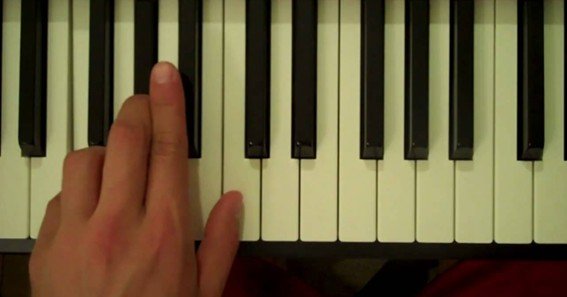If you’re new to chords or simply looking to expand your repertoire, learning Fm on piano (short for the F minor chord) is a great step toward understanding minor tonalities. Whether you’re composing your own music or jamming along to your favorite tunes, F minor often adds a somber, moody quality to any progression.
Fm on Piano: The Basics
In music theory, the F minor chord (Fm) is built from three notes: F, A♭, and C. Here’s how they stack up:
-
Root: F
-
Minor Third: A♭
-
Perfect Fifth: C
When you press these three notes together on the piano, you produce an F minor triad.
Finger Placement
-
Right Hand:
-
F with your thumb (1)
-
A♭ with your middle finger (3)
-
C with your fifth finger (5)
-
-
Left Hand:
-
F with your fifth finger (5)
-
A♭ with your third finger (3)
-
C with your first finger (1)
-
Experiment with different fingerings that feel comfortable. Over time, you’ll naturally adopt a position that suits your playing style.
Inversions
-
First Inversion (A♭ – C – F)
-
Moves the root (F) to the top, placing A♭ in the bass.
-
-
Second Inversion (C – F – A♭)
-
Move both F and A♭ up, placing C in the bass.
-
Inversions help with smoother transitions between chords and give your music varied tonal colors.
Common Progressions
-
Fm – A♭ – E♭ – B♭m
-
A classic minor progression often found in pop and rock ballads.
-
-
Fm – Db – Ab – Eb
-
Fits well in the key of F minor or related modal contexts, perfect for dramatic compositions.
-
Frequently Asked Questions
-
Is Fm the same as F minor?
Yes, FM is simply shorthand for F minor. Both terms refer to the same chord consisting of F, A♭, and C. -
How do I make Fm sound fuller on piano?
Try adding octaves in the bass with your left hand or incorporating chord inversions. Also, consider using broken chords or arpeggios. -
Can I use Fm in major key songs?
Absolutely. Borrowing a minor chord, such as Fm, can add an unexpected color or a darker twist to an otherwise major context. This concept is often referred to as modal interchange or borrowing chords from the parallel minor. -
What’s the difference between Fm and Fm7?
Fm is a triad (F – A♭ – C). Fm7 adds note E♭, extending the chord to four tones (F – A♭ – C – E♭). -
How do I transition smoothly from F major to F minor?
Ease into F minor by shifting from A (the major third) down to A♭ (the minor third). Practice moving between the two chords in slow repetition to train muscle memory.Keep reading for more information on 7442-w-six-mile-rd-northville-mi-48167










